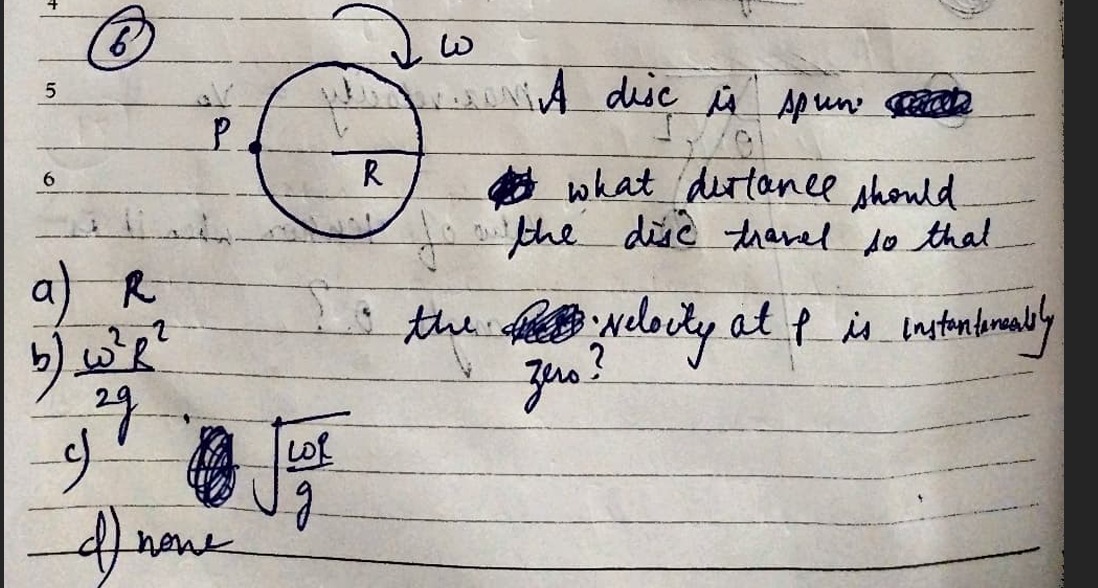Question
Question: A disc is spun with angular velocity $\omega$. What distance should the disc travel so that the velo...
A disc is spun with angular velocity ω. What distance should the disc travel so that the velocity at P is instantaneously zero?

R
2gω2R2
gωR
none
2gω2R2
Solution
The problem asks for the distance the disc travels so that the velocity of a point P on its circumference becomes instantaneously zero.
-
Identify the condition for zero velocity at point P: For the velocity of point P to be instantaneously zero, the velocity of the center of mass (Vc) must be equal in magnitude and opposite in direction to the rotational velocity of P relative to the center of mass (VP,rot). That is, Vc=−VP,rot.
-
Consider the motion: The problem implies the disc is moving under gravity. Let's assume the disc is dropped from rest (Vc,0=0) and simultaneously given an angular velocity ω. The center of mass of the disc will accelerate downwards due to gravity.
- Velocity of center of mass: Vc=gt (downwards, taking positive direction downwards).
-
Analyze rotational velocity of P: The magnitude of the rotational velocity of any point on the circumference is VP,rot=ωR. For Vc=−VP,rot to hold, VP,rot must be vertically upwards.
- This occurs when point P is at the extreme horizontal position (e.g., at the "3 o'clock" or "9 o'clock" position if looking at the disc face-on, with the center at the origin), and the direction of spin ω is appropriately chosen to give an upward rotational velocity component.
- At this specific point P, its rotational velocity is purely vertical with magnitude ωR.
-
Equate velocities: For VP=0, we must have Vc=VP,rot.
- So, gt=ωR.
-
Calculate time and distance:
- The time at which this condition is met is t=gωR.
- The distance traveled (fallen) by the disc's center of mass is given by h=Vc,0t+21gt2. Since Vc,0=0: h=21g(gωR)2 h=21gg2ω2R2 h=2gω2R2
